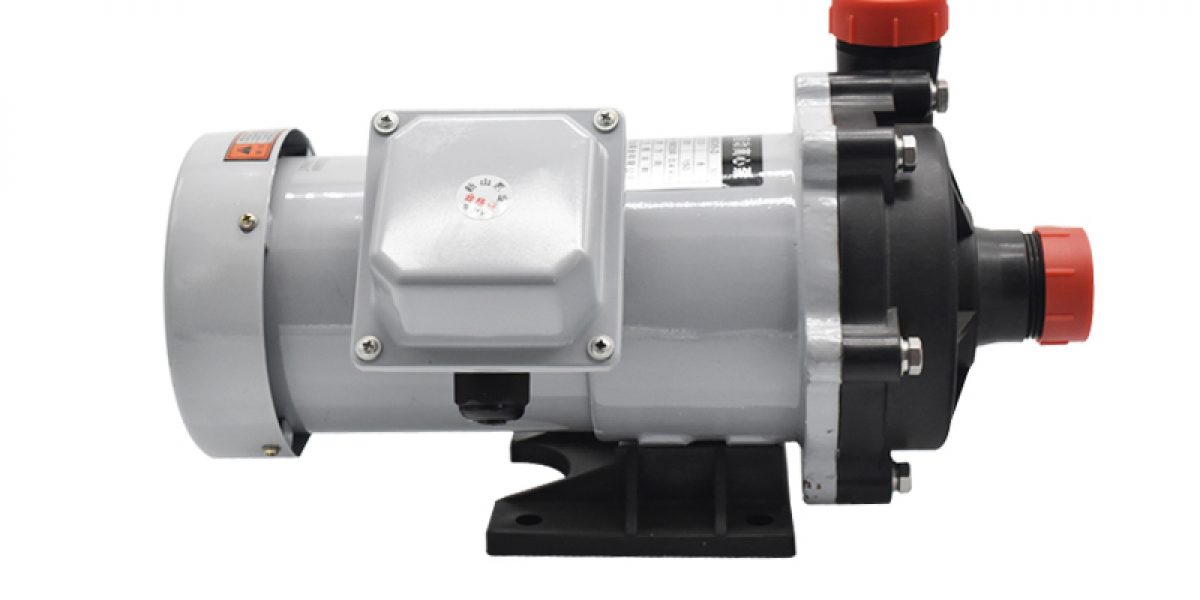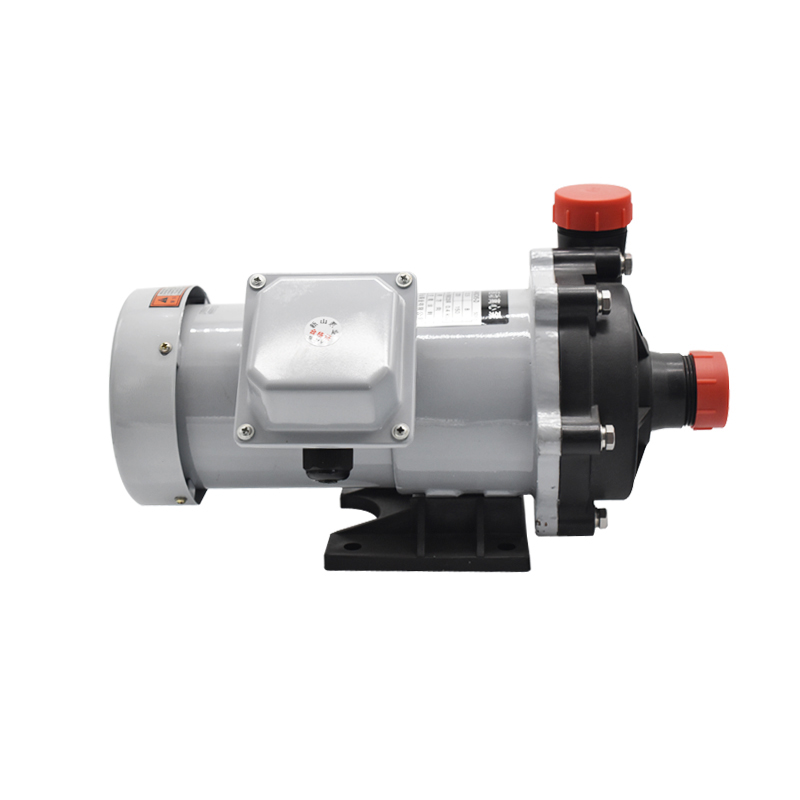Some knowledge of magnetic pumps
The magnetic drive pump is a new centrifugal chemical process pump based on the centrifugal pump that uses magnetic coupling to achieve non-contact transmission of torque, no shaft seal, full seal, no leakage, corrosion resistance, and no pollution.
Magnetic pump is a kind of non-leakage fluid conveying machine without dynamic seal. It is mainly designed for the centrifugal pump in the vane pump, which is usually composed of a pump body, an isolation sleeve and a connecting part that can withstand pressure and a shielded and sealed cavity. There is a rotating permanent magnetic field outside the sealed cavity, and through the action of the magnetic field, the magnetic rotor components inside the sealed cavity are driven to rotate synchronously, and the rotor components inside the sealed cavity drive the impeller to perform work on the fluid. Since there is no dynamic seal in the shielded and sealed cavity composed of stator components, and the rotating shaft that drives the impeller to do work does not pass through the shielded and sealed cavity, the magnetic pump is guaranteed to have zero leakage and no pollution.
The structure principle of magnetic pump
- Magnetic drive pump (referred to as magnetic pump) is usually composed of electric motor, strong coupling and centrifugal pump. Its main feature is to use magnetic coupling to transmit power. When the motor drives the outer magnetic rotor of the magnetic coupling to rotate, the magnetic lines of force pass through the gap and The isolation sleeve acts on the inner magnetic rotor to make the pump rotor rotate synchronously with the motor, and transmit torque without mechanical contact. At the power input end of the pump shaft, because the liquid is enclosed in the stationary isolation sleeve, there is no dynamic seal, so it is completely No leakage.
The magnetic drive pump uses advanced technical design and follows the high efficiency and reliability of the original centrifugal pump in terms of hydraulics. It cancels the traditional mechanical seal device, changes the rigid connection between the motor and the pump to a non-contact flexible connection, and fundamentally eliminates the leakage of the shaft seal.
The scope of application and conveying medium of magnetic pump
Magnetic drive centrifugal chemical process pump, it is widely used in the production process of chemical, petrochemical, metallurgy, pharmaceutical, printing and dyeing, papermaking, electroplating and other companies to transport corrosive or non-contaminated, relative density below 1.84, similar to viscosity Water, liquid without iron filings, impurities and solid particles, especially suitable for the transportation of flammable, explosive, volatile liquid and toxic and precious media.
Transmission characteristics and transmission mode of magnetic pump
- Transmission characteristics
The magnetic drive of the magnetic drive pump adopts a dense cylindrical structure of pulling and pushing. Under the same magnetic volume, the torque that can be transmitted is about 1.5 times that of the dispersed magnetic structure. This structure maximizes the utilization of magnetic energy. The weight of the inner and outer rotors is also greatly reduced, reducing the influence of the weight and imbalance of the rotor system on the sliding bearings.
- Transmission form
There are two structural forms of magnetic drive.
(1) Disc-shaped magnetic coupling
The disc-shaped magnetic coupling is composed of two facing ring magnets and an isolation sleeve in the middle. A relatively large axial force will be generated between the two magnets, and measures to balance the axial force and thickening of the isolating sleeve must be adopted, otherwise the isolating sleeve will be deformed and damaged.
(2) Cylindrical magnetic coupling
The cylindrical magnetic coupling has no axial force. The cylindrical magnetic coupling is composed of inner and outer rotors. The base body of the inner and outer rotors is made of ordinary steel that can be magnetized. A plurality of permanent magnets are closely arranged in the parallel axis direction of the outer circular surface of the inner rotor and the inner circular surface of the outer rotor to form a “combined pull-push magnetic circuit”. Theory and practice have proved that this cylindrical “combined pull-push magnetic circuit” can obtain a larger transmission torque per magnetic circuit with the same magnetic circuit parameters, which is about 4 times that of the traditional decentralized magnetic circuit. The magnetic pump uses this cylindrical “combined pull-push magnetic circuit”, as shown in the figure below.






